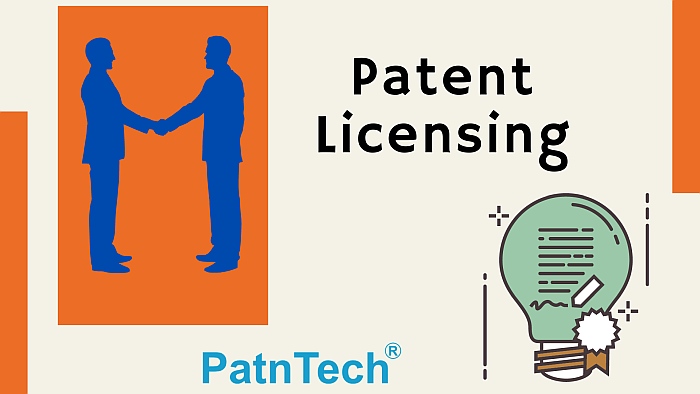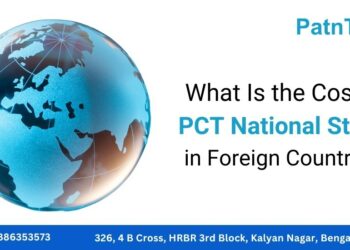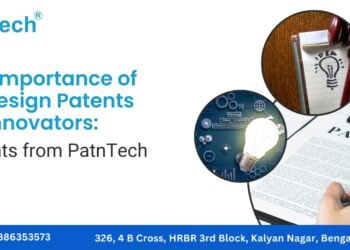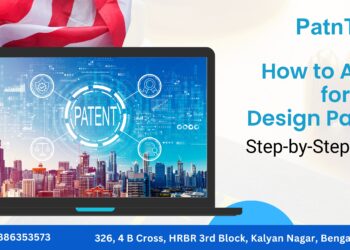Patent Licensing
- November 23, 2020
- Posted by: Patntech
- Categories: Blog, Patents


Patent licensing is the right given to others to use one’s patented invention for profit. A patent gives a patentee the right to exclude others from using, making, selling, offering to sell or importing the invention in specific jurisdiction. Patent licensing from an inventor’s point of view is making use of his invention for monetary purposes.
Licensing a patent for using it in interested party’s products for business has existed from several years. Patent licensing takes place in scenarios where the licensee believes that licensing a patented technology from the patentee will reduce the research and development cost of the organization instead of developing similar technology investing heavily on R&D. Other scenarios include where the patentee identifies potential licensee and offers wilful license in which the licensee can utilize the patented invention to implement the patented technology in their product(s). Patent licensing may otherwise take place in order to avoid infringement lawsuit.
Patent licensing may be exclusive or non-exclusive. The type of licensing will be dependent on the terms and conditions up on which the patentee and licensee agrees during the negotiations of the license terms. Exclusive patent licensing may take place between patentee and licensee wherein only the licensee can use the patented invention with the terms agreed upon during negotiations. Non-exclusive patent licensing may include licensing the patented invention to multiple licensees under different terms and conditions between the patentee and each of the licensees. Another aspect in patent licensing includes cross license agreements in which both parties license each other patented technology in order to use the patented inventions in respective products and to minimize the licensing costs.
Choosing which patent to license and to which party to license may depend on the available technologies or value which the patent can generate when implemented. The patentee should decide on what type of licensing deal he should agree with licensee. The patentee shall decide whether to assign all the rights to licensee (selling of patent), provide exclusive license or consider multiple non-exclusive licenses to several licensees depending on patent’s level of invention.
Major corporations such as Qualcomm, Intel, IBM, Microsoft, Nokia, Motorola, Ericsson has huge patent portfolios in various technologies. IBM earned billions over the years by licensing patents to different companies. Qualcomm, market leader in telecommunication licensed its patented inventions to large number of corporations in the telecom industry. Microsoft signed patent license agreements with a large number of smartphone manufacturers which use android operating system.
Another aspect of patent licensing is the drawbacks in certain situations where the patentee may get less in royalties by licensing the patented invention considering the resources utilized in developing the invention due to poor licensing strategies used during the time of license agreement. In another scenario patent licensing may cost more to licensee where the patented invention becomes obsolete after years of licensing and the licensee may have to pay royalties if the terms are agreed for longer duration than required.
Patent licensing should be considered in the cases where the technology is available rather than reinventing the available technology by spending huge on R&D. Cross-licensing would help the interested parties in developing products by utilizing respective technology. The value of the patent shall be calculated depending on the impact, the patented invention brings when implemented in the product. Alternate technologies and future implementation of patented inventions should be evaluated before signing a license agreement.
Also Read: Insights on Patenting Mobile Applications
Provisional and Complete Patent Application
Author: Chandrasekhar Raju
AIPPI World Congress, Yokohama, Japan
We are pleased to share that PatnTech’s Managing Partner, Mr. Chandrasekhar Raju, attended the AIPPI World Congress held in Yokohama, Japan, from September 13–16, 2025.
October 1, 2025What Is the Cost of PCT National Stage in Foreign Countries?
The Patent Cooperation Treaty (PCT) simplifies patent protection for companies and inventors worldwide
August 6, 2025The Importance of US Design Patents for Innovators: Insights from PatnTech
In today’s competitive marketplace, innovation drives success, and protecting those innovations is crucial.
July 21, 2025How to Apply for a US Design Patent: Your Step-by-Step Guide
A US design patent protects the unique ornamental design of an article of manufacture. It helps businesses and inventors safeguard their innovative creations.
July 10, 2025




